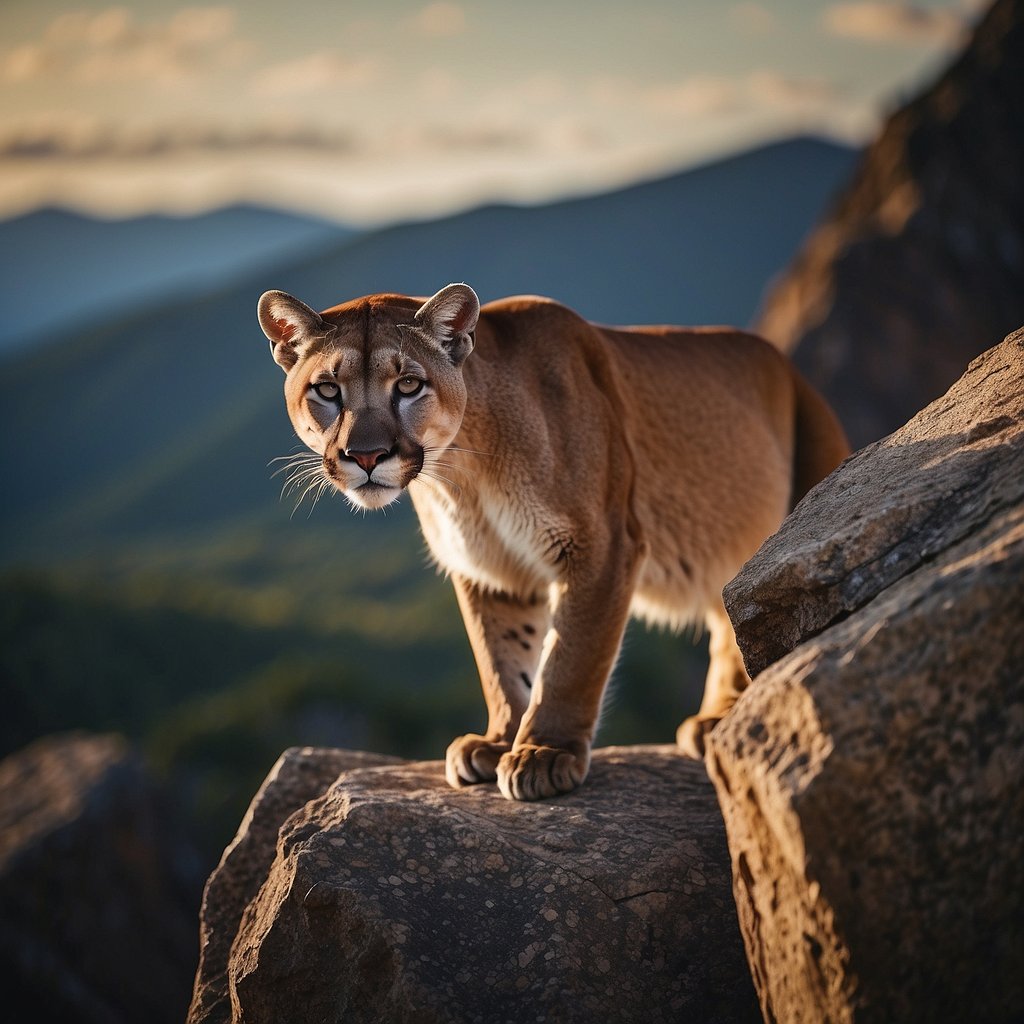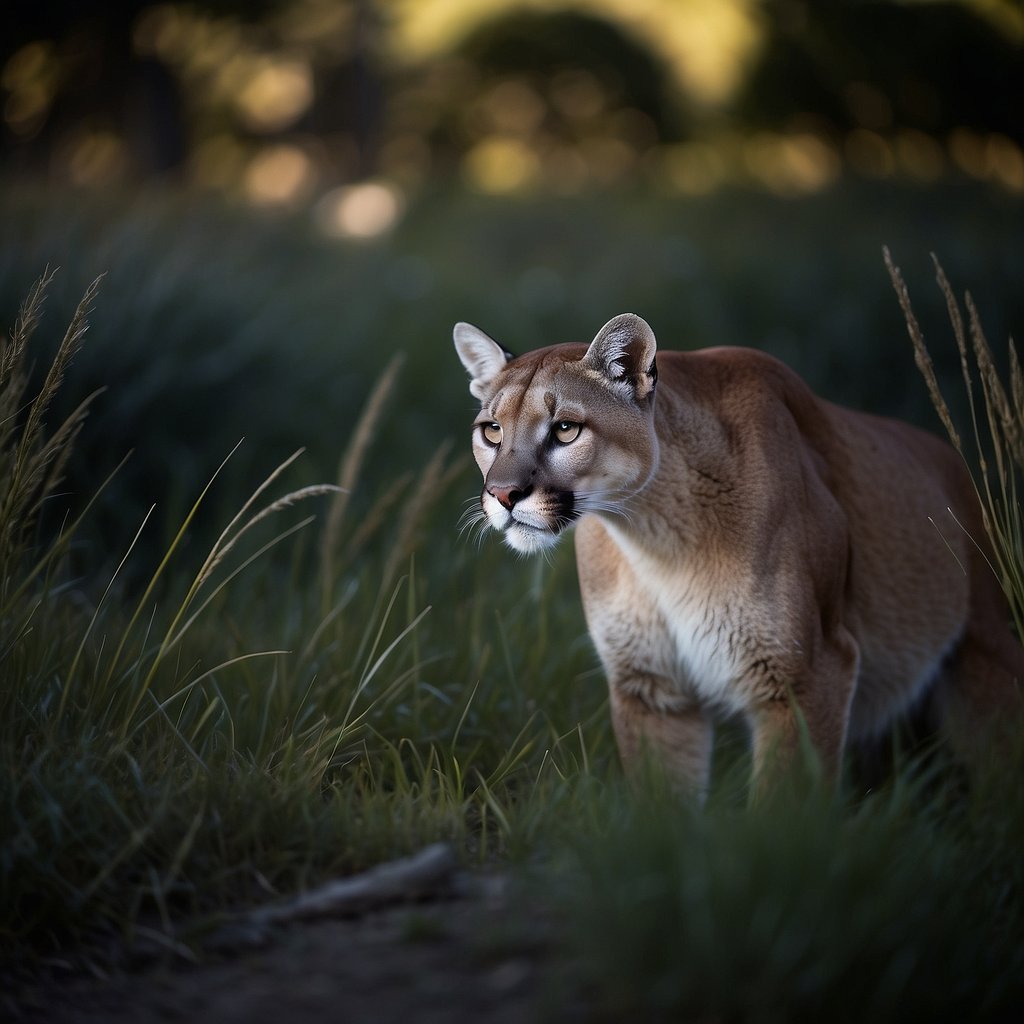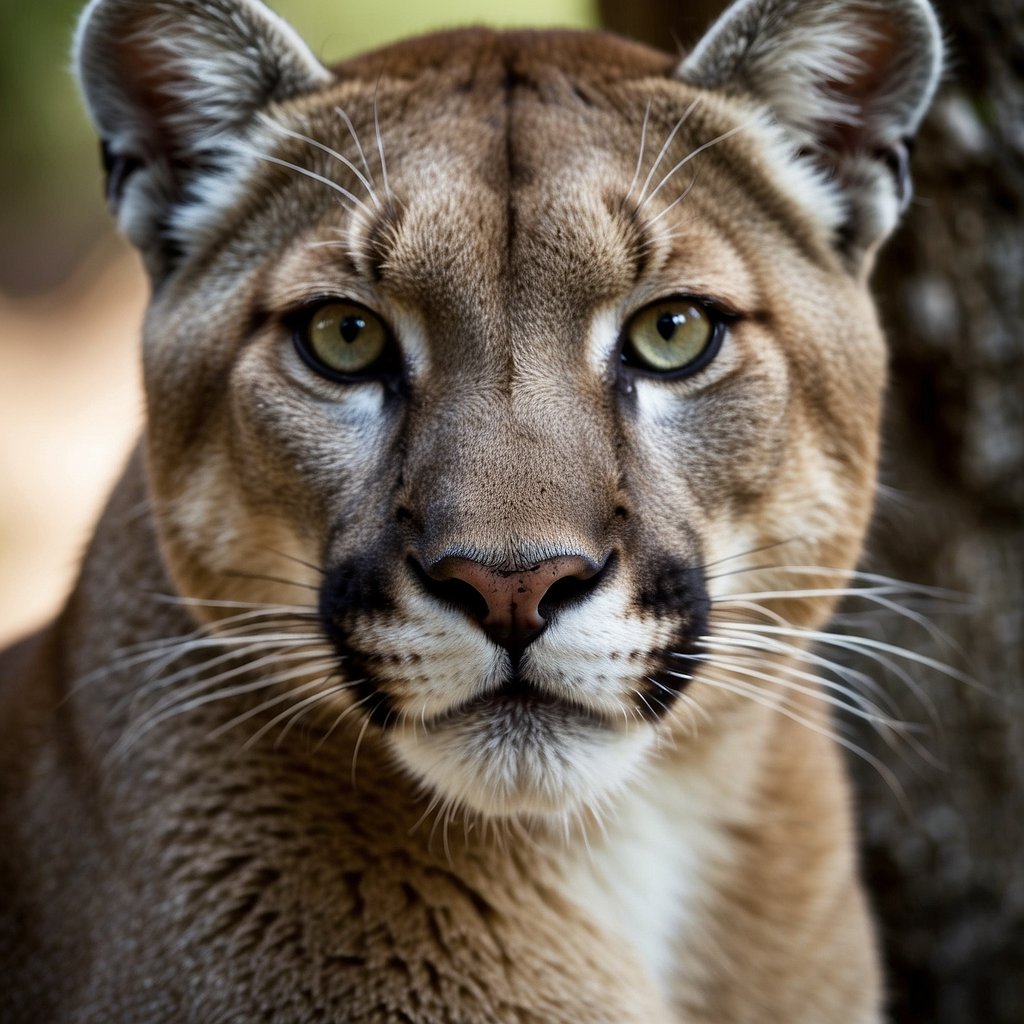
Anatomy of Mountain Lions: Adaptations for survival
The anatomy of the mountain lion, also known as the puma, cougar, panther, or catamount, epitomizes the traits necessary for an apex predator. As members of the Felidae family, Puma concolor boasts a highly specialized body that is fine-tuned for agility, strength, and endurance. Adaptations in their muscular structure and limb proportions allow these large cats to navigate a variety of terrains, from dense woods to rocky mountains. Mountain lions are solitary hunters, equipped with sharp retractable claws and powerful jaws that aid in subduing a range of prey from small creatures to animals much larger than themselves.
The physical characteristics of mountain lions have significant implications for their dietary habits and predatory behavior. Their musculoskeletal system, especially adaptations relevant to their pelvic anatomy, plays a crucial role in their ability to sprint, leap, and climb. This not only affects how they hunt but also how they interact with other species, including competing predators and humans. Understanding the mountain lion’s anatomy provides insight into their ecological impact and conservation status. The species’ survival and their role as a keystone predator hinge on the preservation of their habitats and biodiversity within their ecosystems.
Key Takeaways
- Mountain lions exhibit specialized anatomy suited for predation and survival across varied terrains.
- Their physical adaptations underpin their diet and hunting methods, demonstrating their prowess as apex predators.
- Conservation efforts for mountain lions are critical due to their ecological significance and current status within natural environments.

mountain lion Anatomy: Physical Characteristics
Mountain lions, also known as pumas or cougars, exhibit a range of physical attributes that adapt them to a variety of habitats across the Americas. From their notable size variation between males and females to their powerful sensory abilities, these felids are optimized for predation.
Size and Weight
- Male mountain lions: typically weigh between 115 to 220 pounds (52 to 100 kilograms) and are larger than females.
- Female mountain lions: usually range from 64 to 141 pounds (29 to 64 kilograms).
mountain lion anatomy: Body Structure
Mountain lions possess a muscular build with a strong body that aids in their ability to ambush prey. The large skull houses powerful jaw muscles which enable the mountain lion to deliver a fatal bite to their prey.
- Head: Relatively small with rounded ears.
- Tail: Long and cylindrical, often measuring nearly one-third of the body length and aids in balance.
Coat and Coloration
- Fur: Dense and short, which provides insulation.
- Color: Typically a uniform tawny or reddish-brown, aiding in camouflage.
- Pattern: Juveniles have spotted coats that fade as they mature.
Sensory Abilities
Mountain lions have acute sensory organs that make them proficient hunters.
- Sight: Exceptionally developed, adapted to low light conditions.
- Hearing: Sensitive, capable of detecting a wide range of frequencies.
- Smell: Highly developed, important for detecting prey and scent marking.
Locomotion
They are capable of impressive bursts of speed and have a flexible spine that contributes to their agility.
- Legs: Long and powerful, enabling high-speed chases and leaping.
- Movement: Includes stealthy walking, sprinting, leaping, and climbing.
Vocalizations
Puma, Cougar or Mountain lions use various vocalizations for communication and during mating.
- Scream: A loud, high-pitched sound primarily associated with mating.
- Growl and Hiss: Commonly used in aggressive encounters or to intimidate.
- Purr and Roar: Less common, with purring typically associated with positive interactions, while they are not known to roar like lions.

mountain lion anatomy: Diet and Hunting
Mountain lions are effective predators with a diet primarily comprising large ungulates. Their hunting strategies and feeding behaviors play a crucial role in maintaining the balance within ecosystems where they serve as top-level carnivores.
Prey Species
Mountain lions, also known as Puma concolor, predominantly prey on a variety of ungulate species across their range. Key prey species include:
- Deer: Mule deer and white-tailed deer are staples.
- Elk: A significant part of their diet in regions where elk are abundant.
- Bighorn Sheep: Occasionally hunted when available.
- Small Mammals: Included in the diet, especially for younger or smaller mountain lions.
- Livestock: Occasionally includes livestock, leading to human-wildlife conflicts.
Hunting Techniques
These carnivores employ specific hunting techniques:
- Stalk: They stealthily approach prey to get close without being detected.
- Ambush: Use cover to launch a sudden attack.
- Kill: They typically kill by delivering a suffocating neck bite or by severing the spinal cord.
Mountain lions adapt their methods based on the prey and environment, demonstrating remarkable hunting versatility.
Feeding Habits
Mountain lions exhibit solitary feeding habits, consuming large amounts of food in a single sitting and returning to the kill multiple times:
- Prefer fresh kills: Rarely engage in scavenging.
- Cover their prey: To hide it from other scavengers and predators.
- Can consume 1.4 to 4.5 kilograms of meat per day depending on size, sex, and energy demands.
Impact on Ecosystem
As apex predators, mountain lions exhibit a measurable impact on their ecosystem:
- Predator-Prey Dynamics: Regulate prey populations, affecting plant communities through trophic cascades.
- Carnivore Interactions: Influence populations and behaviors of other carnivore species.
- Ecosystem Health: Contribute to biodiversity by maintaining the hierarchical structure within the ecosystem.
Their role shapes the distribution and health of both prey populations and the wider ecological community.

Mountain lion anatomy: Interaction with Other Species
Mountain lions, also known as pumas or cougars, maintain a critical role in the ecosystem through their interactions with a variety of species, both as apex predators and competitors.
Predators and Competitors
Mountain lions are at the top of the food web, facing few natural predators as adults; however, bears and wolves can pose a threat, especially to younger or vulnerable individuals. Coyotes, while not a direct physical threat to adults, often compete with mountain lions for smaller prey and territory.
- Bears: Potentially prey on young or injured mountain lions.
- Wolves: Compete for similar prey and can sometimes kill mountain lions in conflicts.
- Coyotes: Overlap in prey selection can lead to competition.
Prey Relationships
As obligate carnivores, mountain lions predominantly prey on deer and elk, playing a vital role in maintaining the health and balance of these populations. They also hunt smaller animals when larger prey is scarce.
- Primary Prey: Deer and elk are critical for mountain lion diets.
- Secondary Prey: Includes smaller mammals like raccoons or rodents, especially in periods of food scarcity.
Sympatric Carnivores
In regions where their ranges overlap, mountain lions coexist with other carnivores such as bobcats and coyotes. While not direct competitors due to differing prey size preferences, these sympatric relationships can influence the behavior and territorial dynamics of the species involved.
- Bobcats: Although smaller, they share similar habitats and can compete for smaller prey.
- Coyotes: Have an adaptable diet but may compete for mid-sized prey.
- Wolves: Larger pack dynamics can pressure and displace mountain lions.

mountain lion Conservation Status
Mountain lions, also known as cougars or pumas, face various challenges that threaten their survival, despite ongoing conservation efforts. Their conservation status hinges on addressing these threats, implementing protective measures, and potentially reintroducing populations to historic ranges.
Threats to Survival
Habitat Loss: As human development expands, mountain lions experience significant habitat loss. This not only reduces their living space but also their prey base, leading to potential conflicts with humans.
Hunting and Human Impact: In several areas, mountain lions are subjected to hunting, either for sport or in retaliation for perceived threats to livestock. Additionally, human impact through vehicle collisions and poaching further contributes to mortality rates.
Conservation Efforts
Protection Under Legislation: In regions where mountain lions are deemed endangered, they are protected under various legislation like the Endangered Species Act. This helps ensure that critical habitats are preserved and that killing or trading them is prohibited.
Breeding and Captivity: Some conservation programs involve breeding mountain lions in captivity to boost population numbers, followed by careful monitoring when these animals are released into the wild.
Reintroduction Programs
Reintroduction to Former Ranges: Reintroduction programs aim to restore mountain lion populations in areas where they have been extirpated. This involves releasing individuals into suitable habitats where they once roamed to re-establish their presence. Developing Subspecies Populations: Focused efforts are made to protect subspecies of mountain lions that are particularly endangered. By bolstering these smaller populations through reintroduction, genetic diversity can be maintained.
Frequently Asked Questions
In this section, key aspects of mountain lion anatomy and behavior are addressed through common inquiries.
What are the key differences between male and female mountain lion anatomy?
Male mountain lions typically exhibit a larger, more robust physique compared to females, with larger heads, paws, and overall body size.
What are the characteristics of the anatomy of mountain lions skeletal structure?
The skeleton of the mountain lion is designed for strength and agility, with a flexible spine that aids in running and pouncing, and powerful limbs for capturing prey.
How does the size and weight of mountain lions vary?
Adult mountain lions can vary greatly in size, with males generally weighing between 115 to 220 pounds and measuring up to 8 feet in length, while females are slightly smaller.
What habitats are typically occupied by mountain lions?
Mountain lions are adaptable and occupy a variety of habitats including mountains, forests, deserts, and wetlands across North and South America.
What is the primary diet of a mountain lion?
Mountain lions are carnivorous, primarily preying on deer, but they also hunt other mammals ranging from rodents to elk, depending on availability.
Can you describe typical mountain lion behaviors and social structures?
Mountain lions are solitary animals with defined territories. They communicate through vocalizations, scent marking, and visual signaling and typically avoid each other except during mating or when females are raising their cubs.